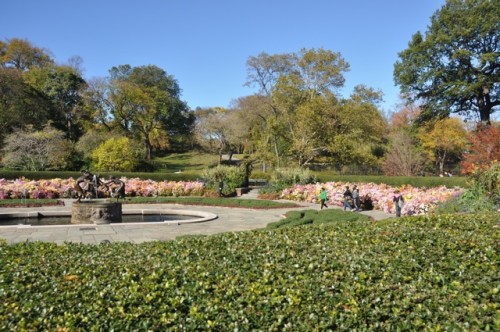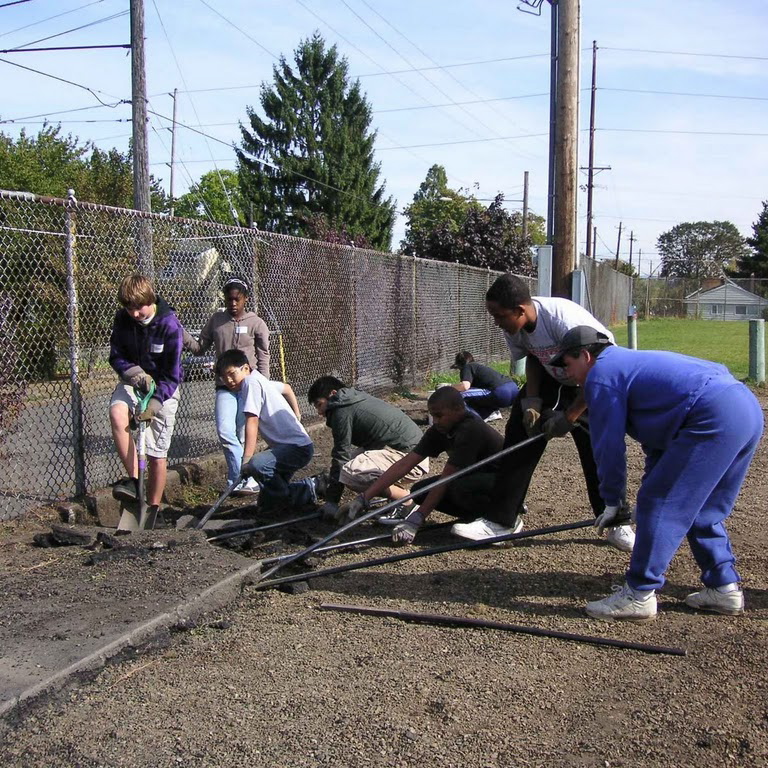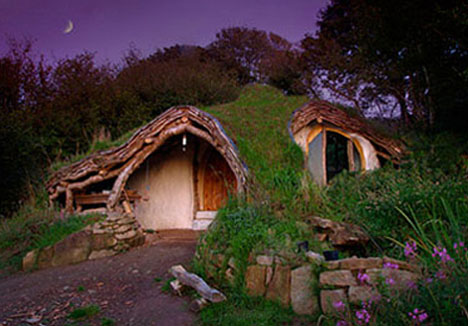green space
-
-
Garden designer Lynden Miller says a healthy city needs beautiful parks
"Every human being responds to a connection with nature," says Lynden Miller, who has designed many of New York's most successful public gardens. "People of all kinds love something beautiful and will talk to each other when they see it. They change the way they behave. It changes the way they feel about themselves and each other."
-
A Portland group pulverizes pavement to make way for green space
Have you ever gotten so sick of the sight of asphalt that you just wanted to take a sledgehammer to it and start smashing? Meet Depave, the Portland, Ore., group that lives the dream. Since 2007, this all-volunteer squad of pavement-bashers has ripped the asphalt and concrete from 14 sites in the Portland area, making way for community gardens, sustainable schoolyards, and green space.
-
The secret life of green roofs [SLIDESHOW]
The city of Portland, Ore., is aiming for 49 total acres of eco-roofs in the city by 2013 (the city’s paying up to $5 per square foot to any home or business that builds one). But what about green roofs outside the urban environment? What’s the appeal there? Blending more with the natural surroundings? Sure, […]
-
Clustered housing and green space combine to good effect
Located just outside Austin, Plum Creek in Kyle, Tex. is this region's first traditional neighborhood development -- a community of 8,700 residential units, several hundred acres of green space, over 600 acres of commercial, employment, and mixed-use property, a 70-acre town center, and a commuter rail station, all built on the principles of "new urbanism."
View full stats and project history at Terrain.org, which has an absorbing file of such "UnSprawl Case Studies" (and other great literary and visual content on place, both natural and built) viewable in the dropdown in the top right corner. Plum Creek may not look like paradise to everyone, but it's an example of the way new developments can keep up with the times and the needs of a changing social and energy landscape.
-
Improving on the ambiguity of privately owned public spaces
This article is part of a collaboration with Planetizen, the web’s leading resource for the urban planning, design, and development community. Cities are filled with spaces intended for the public — but many of them are clearly owned and operated by the private sector. Though cities bend rules to get these spaces built, the public […]
-
How urban life hurts your brain … and what you can do about it
A fascinating little article in Sunday's Boston Globe Ideas section highlights some recent scientific studies on the psychological effects of city life:
Just being in an urban environment, they have found, impairs our basic mental processes. After spending a few minutes on a crowded city street, the brain is less able to hold things in memory, and suffers from reduced self-control ...
"The mind is a limited machine," says Marc Berman, a psychologist at the University of Michigan and lead author of a new study that measured the cognitive deficits caused by a short urban walk. "And we're beginning to understand the different ways that a city can exceed those limitations."So is it the sensory overload of being in an urban environment or the lack of nature that does the damage? It seems to be a bit of both: Numerous studies have shown, for instance, that hospital patients recover more quickly when they can see trees from their windows and that apartment-dwellers function better when their units overlook a grassy courtyard. Green spaces provide a mental break, according to the article, from the "urban roil."
But what if the urban space isn't roiling? I mean, it stands to reason that walking through Times Square during a power outage at 5 a.m. on a Sunday morning would tax the brain less than doing so on New Year's Eve, but would it be less taxing than hiking through a riotous rainforest?
Interestingly enough, the answer is probably "no." The article goes on to explain that when it comes to nature, the more sensory stimulation, the better.
Although [Frederick] Olmsted took pains to design parks with a variety of habitats and botanical settings, most urban greenspaces are much less diverse. This is due in part to the "savannah hypothesis," which argues that people prefer wide-open landscapes that resemble the African landscape in which we evolved. Over time, this hypothesis has led to a proliferation of expansive civic lawns, punctuated by a few trees and playing fields.
However, these savannah-like parks are actually the least beneficial for the brain. In a recent paper, Richard Fuller, an ecologist at the University of Queensland, demonstrated that the psychological benefits of green space are closely linked to the diversity of its plant life. When a city park has a larger variety of trees, subjects that spend time in the park score higher on various measures of psychological well-being, at least when compared with less biodiverse parks.OK, you say, so now surprise me. I don't need a psych study to tell me that a walk in the park is good for the mood. Or that traffic jams are less fun than lakes and butterflies. Point taken. But to the extent that scientific studies can help make the case for innovative urban design, including greener, airier homes and apartments, wilder public parks, and less concrete in between, then I'm all for them. And hey, it's a good argument for a corner office.
-
Town forests gaining popularity
Living in Switzerland after college, I was amazed by the way communities both revered and used the landscape. Every facet of efficiency was enthusiastically explored, small farms abounded (growing grains on plots as small as an acre or less), and mountain trails were thick with orchids, green woodpeckers, and bell-toting cows. But my favorite thing […]
-
In L.A., Mayor Villaraigosa plays footsie with Forever 21 over site of former farm
Photo: loudtiger When I lived in New York City, I used to marvel at the weeds that would force their way up through sidewalk cracks. What a will to live, I thought: From clumps of dirt crammed between concrete slabs, these vigorous shoots fended off the hard, slapping heels of a thousand rushing city dwellers, […]




